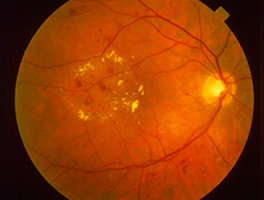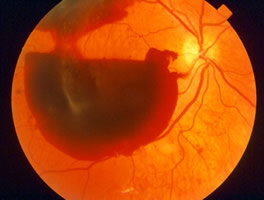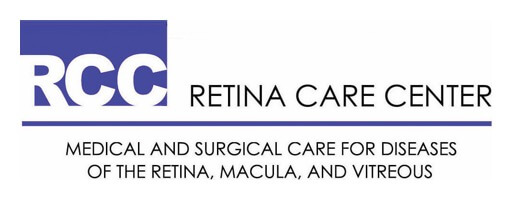
Diabetic retinopathy is the most common diabetic eye disease and is a leading cause of blindness in adults. Patients with diabetes are at a higher risk for developing eye conditions because a high blood sugar level can damage blood vessels in the eye. Diabetic retinopathy can cause vision loss because of swelling that occurs in the central macula or because of bleeding that occurs within our eyes. It is important for patients with diabetes to have dilated eye exams once a year to detect diabetic eye disease. You can also minimize your risk of developing diabetic eye disease by keeping your blood sugar, blood pressure and cholesterol under control and by eating a healthy diet and exercising regularly. Smoking, excessive drinking and poor exercise habits all speed the progression of diabetic retinopathy, so avoiding them can also help prevent the disorder. The damage caused by diabetic retinopathy cannot be cured, but the progression can be slowed, especially when detected during its early stages. The two major forms of diabetic retinopathy include 1) non-proliferative diabetic retinopathy (NPDR) and 2) proliferative diabetic retinopathy (PDR). Both forms can lead to severe visual loss.
Non-Proliferative Diabetic Retinopathy (NPDR)

This is the earliest form of diabetic retinopathy and in its initial stages, the patients often see normally. However, in time, abnormal blood vessels called microaneurysm can begin leaking. Soon, normal blood vessels can become blocked and may start bleeding and lipid exudates can form in the central retina (macula). This can lead to macular edema or swollen central retina, which will cause visual loss.
Proliferative Diabetic Retinopathy (PDR)
In time, PDR forms as normal retinal blood vessels close and normal oxygen can no longer reach the retinal tissue. In response to this, abnormal production of a blood vessel hormone called vascular endothelial growth factor (VEGF) takes place. VEGF causes fragile abnormal blood vessels to grow inside the eye. These abnormal blood vessels will rupture and bleed, often causing severe vision loss.

Neovascular Glaucoma (NVG)
The most advanced form of PDR, neovascular glaucoma results from abnormal growth of blood vessels into the outflow tracts of the eye. Since fluid can no longer leave the eye through the normal passages, the eye pressure can skyrocket, causing severe eye pain, headache, nausea and vomiting. Permanent vision loss often results when this occurs.
Treatment of Diabetic Retinopathy
NPDR: The treatment of central retinal swelling (macular edema) can be with a laser. This is a painless in-office procedure that can lead to reduced retinal swelling, preventing vision loss. Other treatments include injecting medicines in the eye such as Avastin®, Lucentis®, Eylea®, Iluvien® and Ozurdex®. These medications are easily administered and only take a few minutes in the office.
PDR: The treatment of bleeding blood vessels can also be performed in the office with a laser procedure called scatter laser photocoagulation. This procedure often leads to closure of these abnormal blood vessels and therefore reduces the threat of severe vision loss. Medications can be injected into the eye as well in order to close the abnormal blood vessels.
NVG: The treatment includes scatter laser or injection of medicines into the eye.
Vitreous hemorrhage or bleeding: Sometimes, the eye can fill with blood, making it difficult to treat in the office. When this occurs, the doctor often needs to perform a surgery on the eye called vitrectomy. This is a commonly performed same-day procedure, allowing the doctor to remove the blood from the eye and restore vision.



